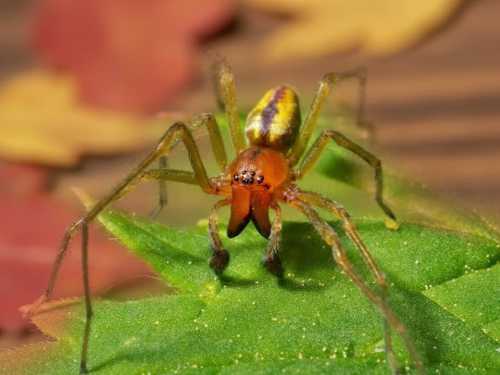
If there are any joys of living in the harsh northern climate, then among them must surely be the fact that the most poisonous animals prefer to live in other regions of the planet. But even in our vast expanses there are quite unpleasant individuals. For example, the yellow sac spider is a small spider that you clearly do not want to get to know better.
It is easy to miss an arthropod, the translucent yellowish body no more than 15 mm is very easy to get lost in the grass. But it is difficult to miss the moment of meeting a yellow sac. Powerful chelicerae, distinctly protruding forward, dig into the delicate skin of homo sapiens with a range of sensations that are very reminiscent of a wasp attack.
This eight-legged friend is one of the few spiders in our area whose bite is very painful and unpleasant. Of course, it won't kill you. But its venom is strong enough to cause an acute reaction to the toxins: severe pain, swelling, chills… However, these symptoms usually pass within 24-48 hours. In short, after meeting with a saccharin, the bitten person will have a very “fun” day.
The problem is complicated by the fact that the marsupial has settled in almost half of Eurasia. Spiders warm their bellies almost throughout southern Europe and even in Central Asia. And given global climate change, the heat-loving arthropods will continue to expand their range northward.
In addition to a warm climate, the marsupial loves spacious meadows with thick grass, where it is very convenient to hunt. The methodical hatching of the abdomen near the spider's web does not suit our hero. He takes matters into his own hands and goes after the prey on his own.
And to increase the chances of success, the spider goes hunting at night. Its eyesight is so-so, but it skillfully senses the world around it. With the help of sensitive hairs on its legs, the spider catches the slightest vibrations, like a locator, and chemoreceptors help it “feel” its prey by touch. It tracks down aphids, moths, ticks and other small insects that it feeds on. One injection of poison is enough for the victim to literally fall apart from hopelessness and toxins. The sacrificial agent can only suck up the broth in the chitinous package.
But if we take reproduction, then everything ends sadly for the spiders themselves. The thing is that yellow sac spiders are annual spiders. Their life cycle is short: males die in mid-summer, and females a little later, surviving until the end of summer or the beginning of autumn. The love season for spiders begins in the very height of summer – in mid-July. This is also the time when most bites occur.
The thing is that during the mating season, the mood of the ladies towards everyone around them is sharply negative. Male spiders know this, so the meeting with the girl takes place according to a cunning scheme. The male finds the female's nest and waits. When the right hour comes, he does not burst inside, but performs a kind of “nuptial dance” – he carefully vibrates his paws on the female's pouch, letting her understand his intentions. This is a signal that he is a gentleman, not dinner. This is enough for his beloved not to eat him before he fulfills his marital duty. But after mating, the male, like most spiders of his species, soon dies of natural causes – his life cycle comes to an end.
By the way, the newly-emerged mother does not go far from her fleeting husband. Already in August, she lays a pack of eggs packed in a cocoon, locks herself in it with them and guards them. Another 3 weeks pass in aggressive waiting mode. The babies reach the necessary condition and hatch, and the female with a calm soul goes to the next world. Her body serves as a starting supply of nutrients for the babies. This ensures their survival at an early stage. The spiderlings, having successfully overwintered, will continue the genus and will spread their poisonous fame throughout all the fields and gardens next year!





